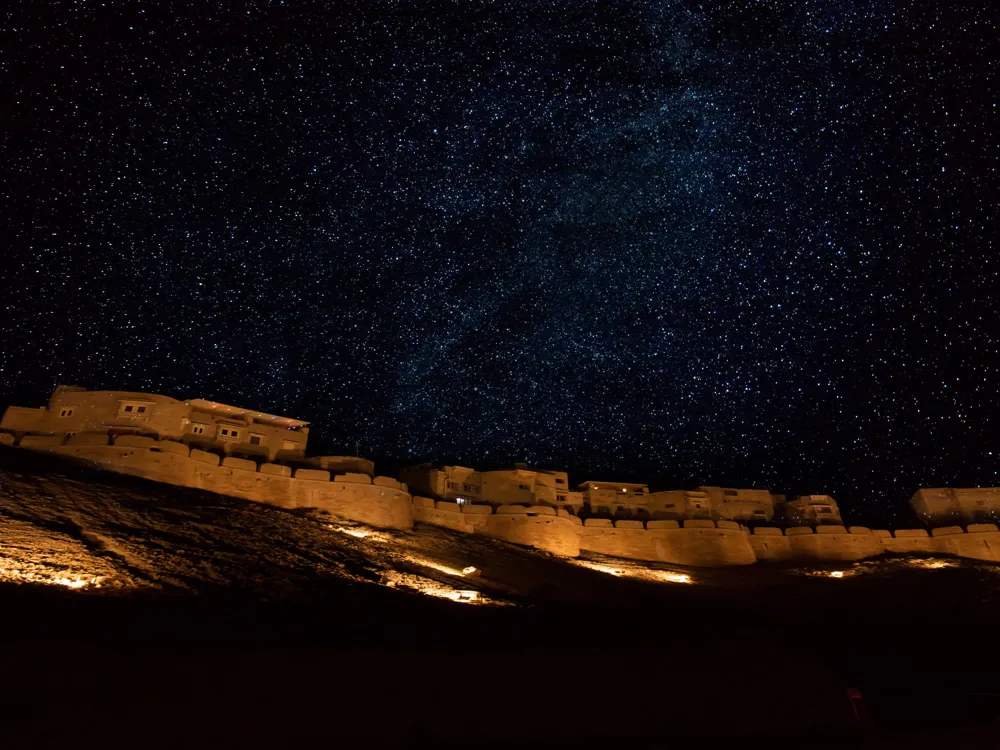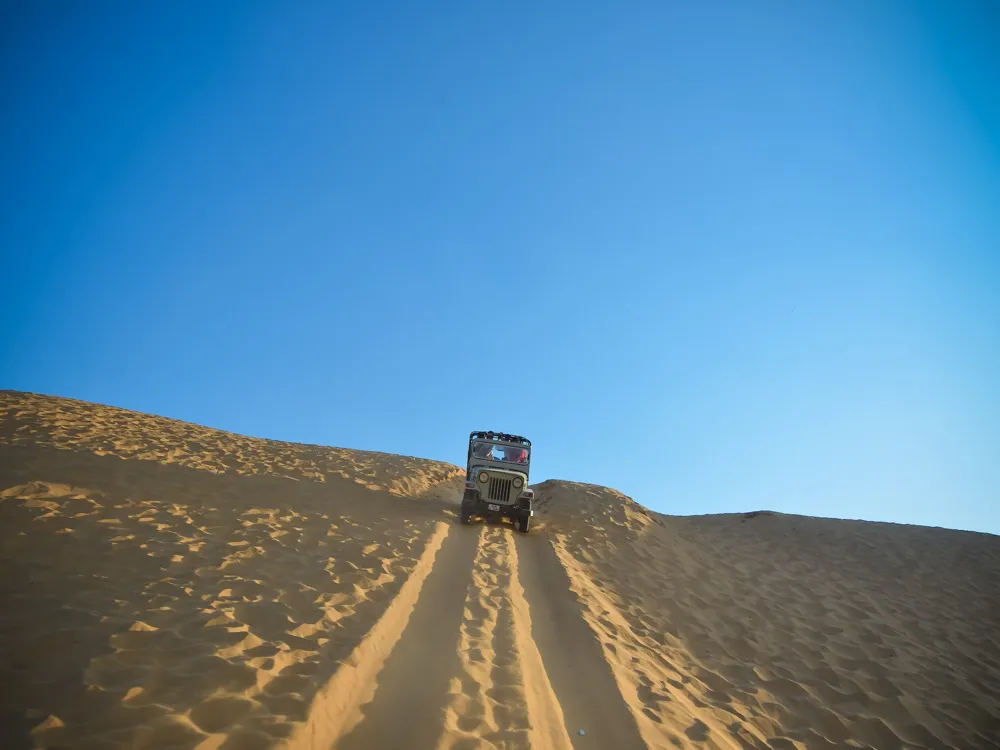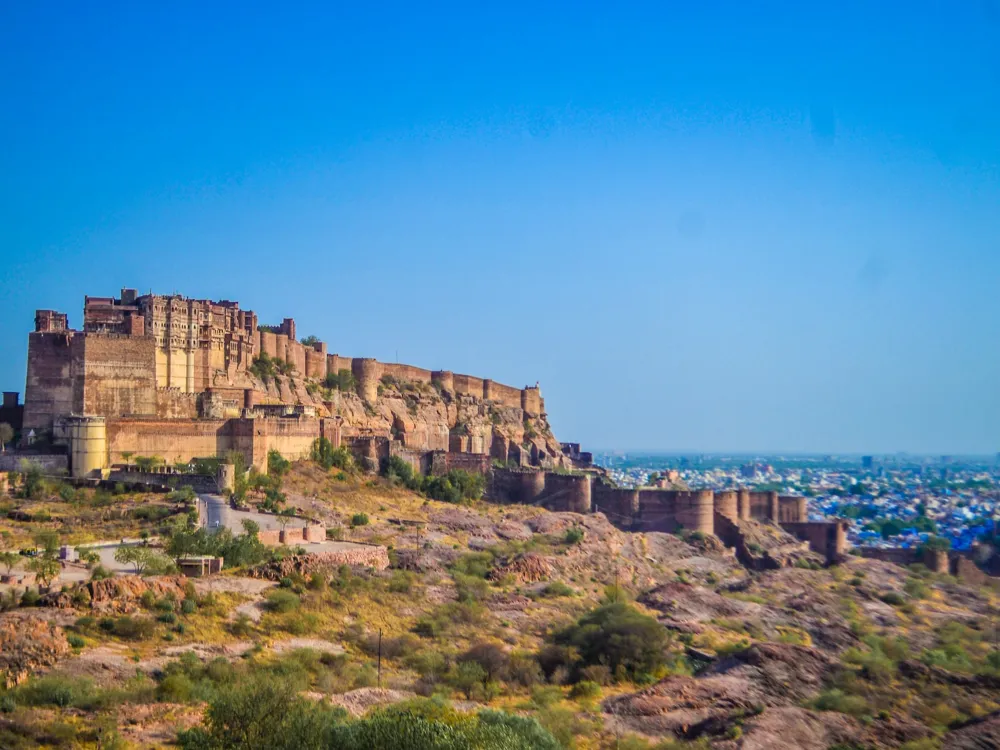Devi Kund, located in the historic city of Bikaner, Rajasthan, is a quintessential emblem of Rajasthani cultural heritage. This site, renowned for its royal cenotaphs, is a testament to the architectural brilliance and rich history of the Rajput era. The cenotaphs, known locally as 'chhatris', are dedicated to the rulers of Bikaner and their family members. Each structure narrates a unique story of the bygone era, reflecting the glory and valor of the Rajput rulers. The history of Devi Kund dates back to the 16th century, marking it as a significant historical site. This place not only showcases the architectural prowess of the Rajputana style but also offers a serene and contemplative environment. Visitors often find themselves captivated by the intricate carvings and the somber beauty of the cenotaphs, which stand as a poignant reminder of Rajasthan's royal past. One of the unique features of Devi Kund is the amalgamation of Islamic and Rajput architectural styles, a rare occurrence in Indian history. This blend is evident in the domes, pillars, and detailed frescoes that adorn the cenotaphs. The site's layout, encompassing several cenotaphs in a symmetrical arrangement, creates a visually striking landscape against the backdrop of the Thar Desert. Devi Kund's historical significance is not just limited to its architecture. It is also a reflection of the socio-cultural aspects of the Rajput lifestyle. The cenotaphs, apart from being architectural marvels, are also symbols of the deep respect and reverence the Rajput clans had for their leaders. This reverence is palpable in every aspect of Devi Kund, making it a must-visit destination for those interested in exploring Rajasthan's royal heritage. The architecture of Devi Kund is a splendid example of the Rajputana style, characterized by intricate detailing, grandeur, and a blend of cultural influences. The cenotaphs, made of exquisite white marble and red sandstone, stand as a testament to the skill and craftsmanship of the artisans of the time. Each cenotaph at Devi Kund is distinct, with variations in design, layout, and ornamentation, reflecting the individual tastes and preferences of the rulers they commemorate. The main architectural features include 'chhatris' or dome-shaped pavilions, often seen in Rajput and Mughal architecture. These chhatris are supported by elegantly carved pillars, each telling a tale of the royal era through its intricate carvings and motifs. The use of jali (lattice) work in the cenotaphs adds a touch of delicate beauty, allowing light and air to pass through, creating a play of shadows and light within the structures. The walls and ceilings of the cenotaphs are adorned with frescoes and paintings, depicting scenes from Hindu mythology, as well as portraits of the rulers and their exploits. These artworks are not only aesthetically pleasing but also serve as historical records, providing insights into the lives and times of the Rajput kings and queens. The layout of Devi Kund is also noteworthy. The cenotaphs are strategically placed, often surrounded by well-manicured gardens, adding to the tranquility and beauty of the site. This thoughtful arrangement demonstrates the harmonious blend of architecture and nature, a hallmark of Rajputana design principles. The ideal time to visit Devi Kund is between October and March when the weather in Rajasthan is pleasant. During these months, the temperature is cooler, making it comfortable to explore the outdoor site. Visitors are advised to dress modestly, keeping in mind the cultural and historical significance of Devi Kund. Comfortable walking shoes are recommended as the site involves a fair amount of walking. For photography enthusiasts, early morning or late afternoon offers the best light for capturing the stunning architecture. Tripods and additional equipment might require prior permission. Opting for a guided tour can enhance your experience, providing deeper insights into the history and architecture of Devi Kund. Devi Kund is easily accessible from various parts of Rajasthan. Bikaner, being a major city, is well-connected by road, rail, and air. The nearest airport is in Jodhpur, from where you can take a train or bus to Bikaner. Once in Bikaner, local taxis and auto-rickshaws can take you to Devi Kund, which is located just outside the city limits. For those traveling by train, Bikaner has its own railway station with good connectivity to major Indian cities. The journey by road is also scenic, offering a glimpse of the beautiful Rajasthani landscape. Various state-run and private buses ply regularly to Bikaner from neighboring cities and states. Read More:Overview of Devi Kund, Bikaner, Rajasthan
Architecture of Devi Kund
Tips When Visiting Devi Kund
Best Time to Visit
Dress Code and Etiquette
Photography Tips
Guided Tours
How To Reach Devi Kund
Devi Kund
Bikaner
Rajasthan
₹ 15,250 onwards
View bikaner Packages
Bikaner Travel Packages
View All Packages For Bikaner
Top Hotel Collections for Bikaner

Private Pool

Luxury Hotels

5-Star Hotels

Pet Friendly
Top Hotels Near Bikaner
Other Top Ranking Places In Bikaner
View All Places To Visit In bikaner
View bikaner Packages
Bikaner Travel Packages
View All Packages For Bikaner
Top Hotel Collections for Bikaner

Private Pool

Luxury Hotels

5-Star Hotels

Pet Friendly





















